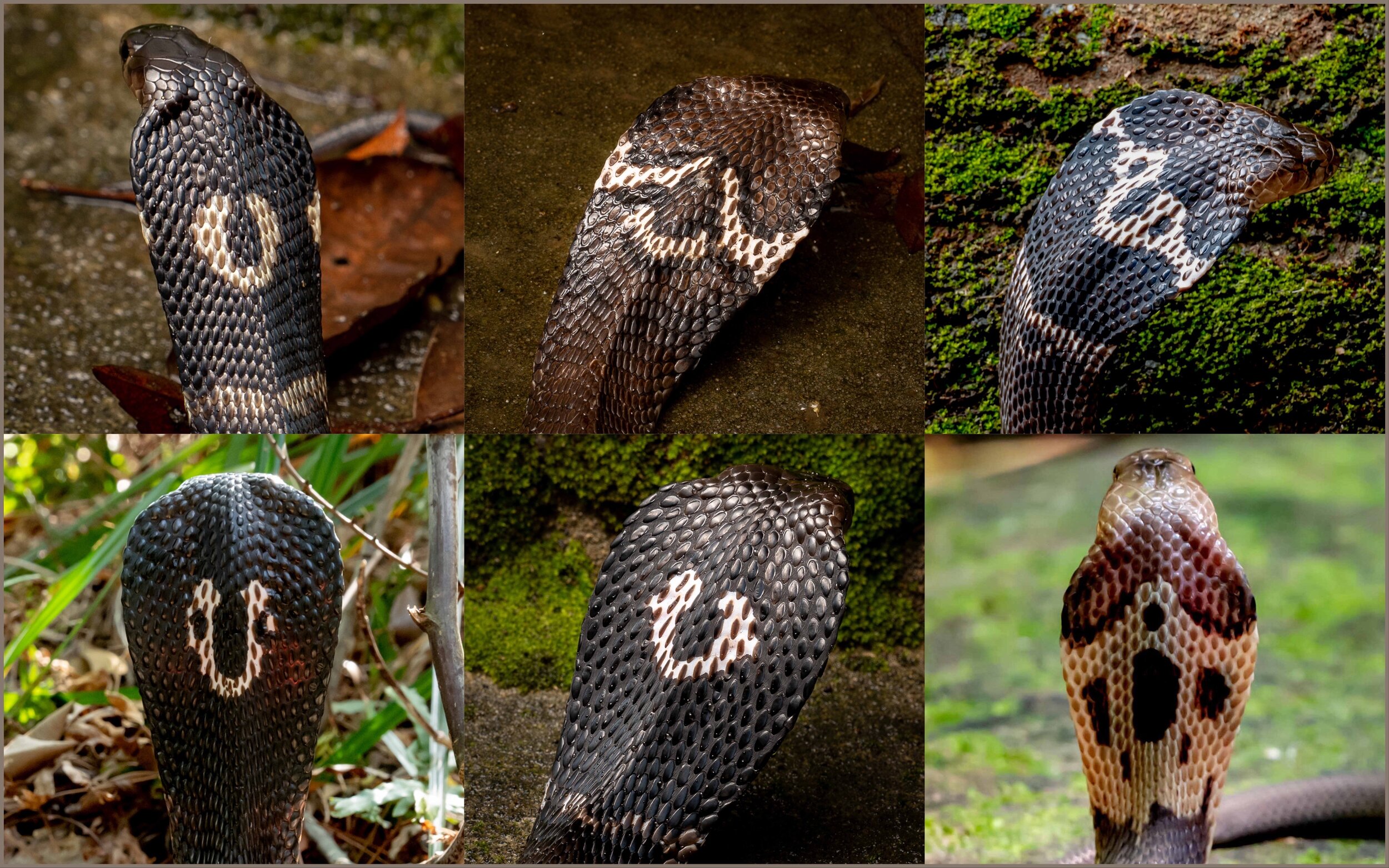SUMMARY
VENOM: Highly Toxic - Potentially Lethal
PREVALENCE: Common
ACTIVE PERIOD: Active during the night and day
KEY ID FEATURES: Hooded when disturbed, grey/white monocle marking on neck
BEHAVIOR: Fast, defensive and willing to bite if scared, cobras should be given space when encountered
SIZE: Medium - ~1.5m
IUCN: VU - Vunerable
OTHER: Can be mistaken with rat snakes when not hooded
QUICK ASSESSMENT 0-10
VENOM REVIEW*
COMPOSITION: Post-synaptic neurotoxins, Cardiotoxins (possibly present), Necrotoxins (possibly present).
LOCAL EFFECTS: High lethality potential, pain, swelling, necrosis resulting from venom and bacteria.
GENERAL EFFECTS: Nausea, headache vomiting, general pain, dizziness, diarrhoea, collapse and/or convulsions, potential paralysis, possible bradycardia, possible shock.
TREATMENT: Antivenom.
*INFORMATION ON VENOM OBTAINED FROM WWW.TOXINOLOGY.COM
GALLERY
IMPORTANT: Many snakes have significant variance in coloration and pattern even within the same species. There can also be extreme differences in appearance from juveniles to adults so it is important to never assume you have properly identified a snake.
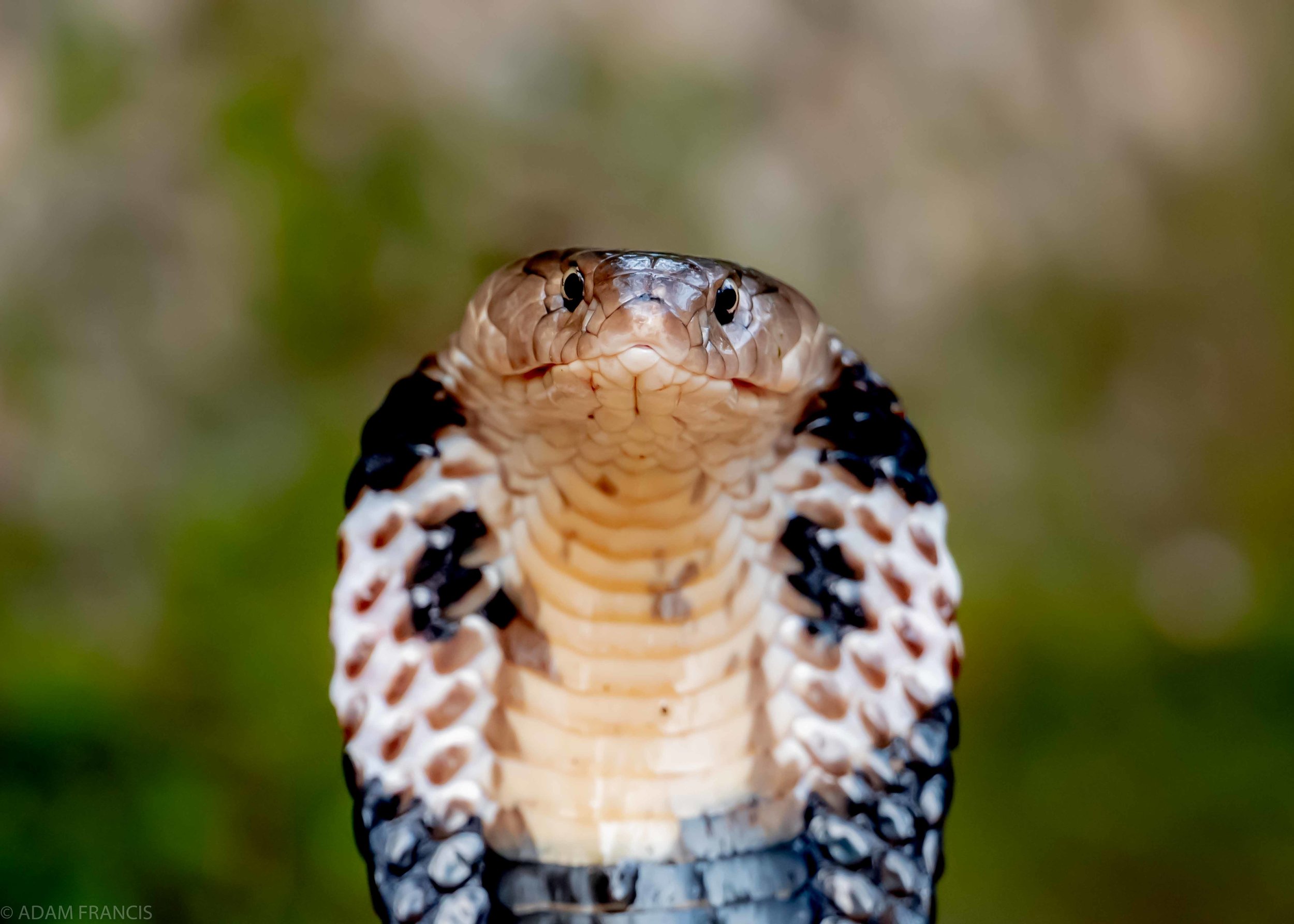
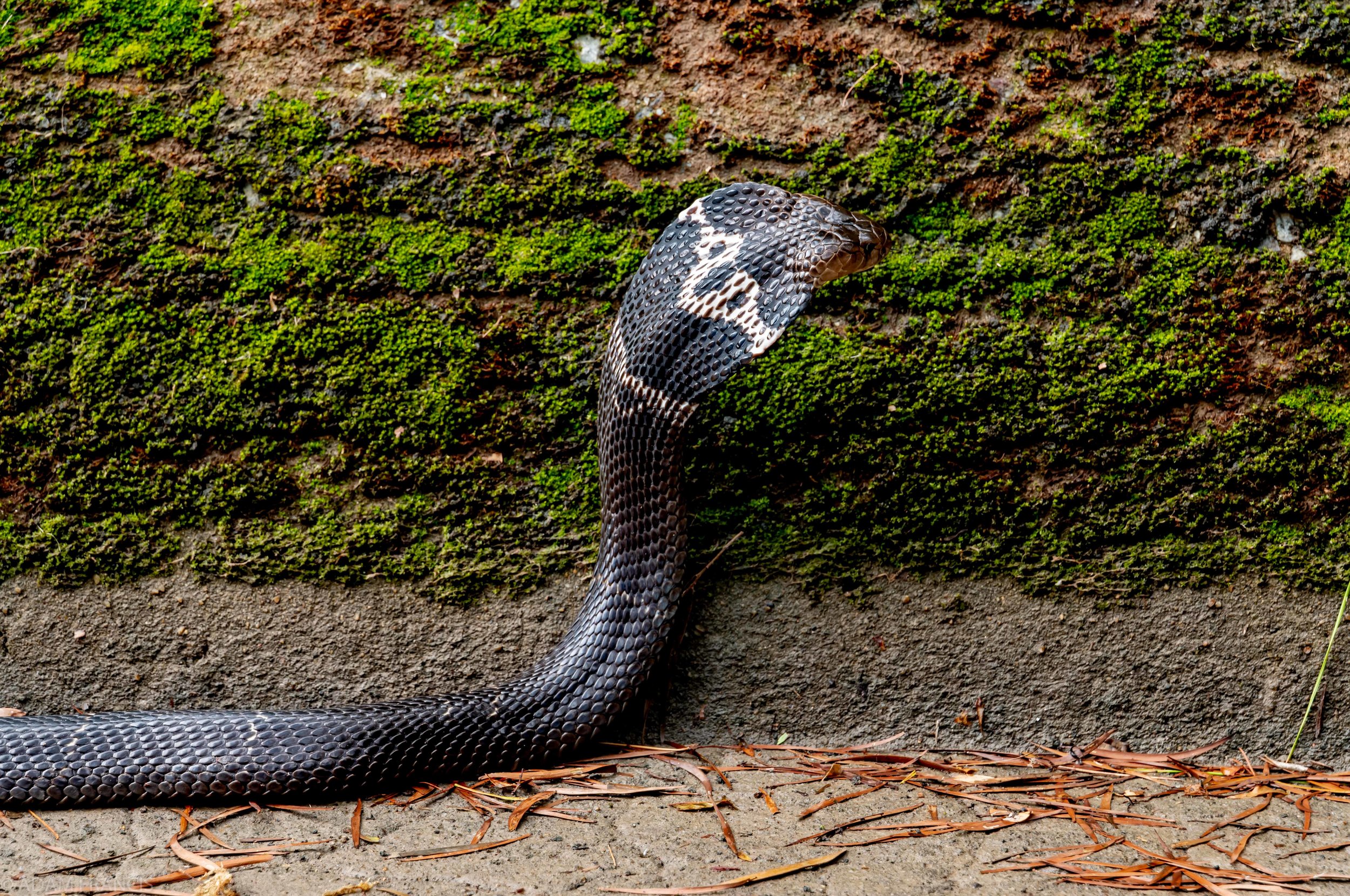
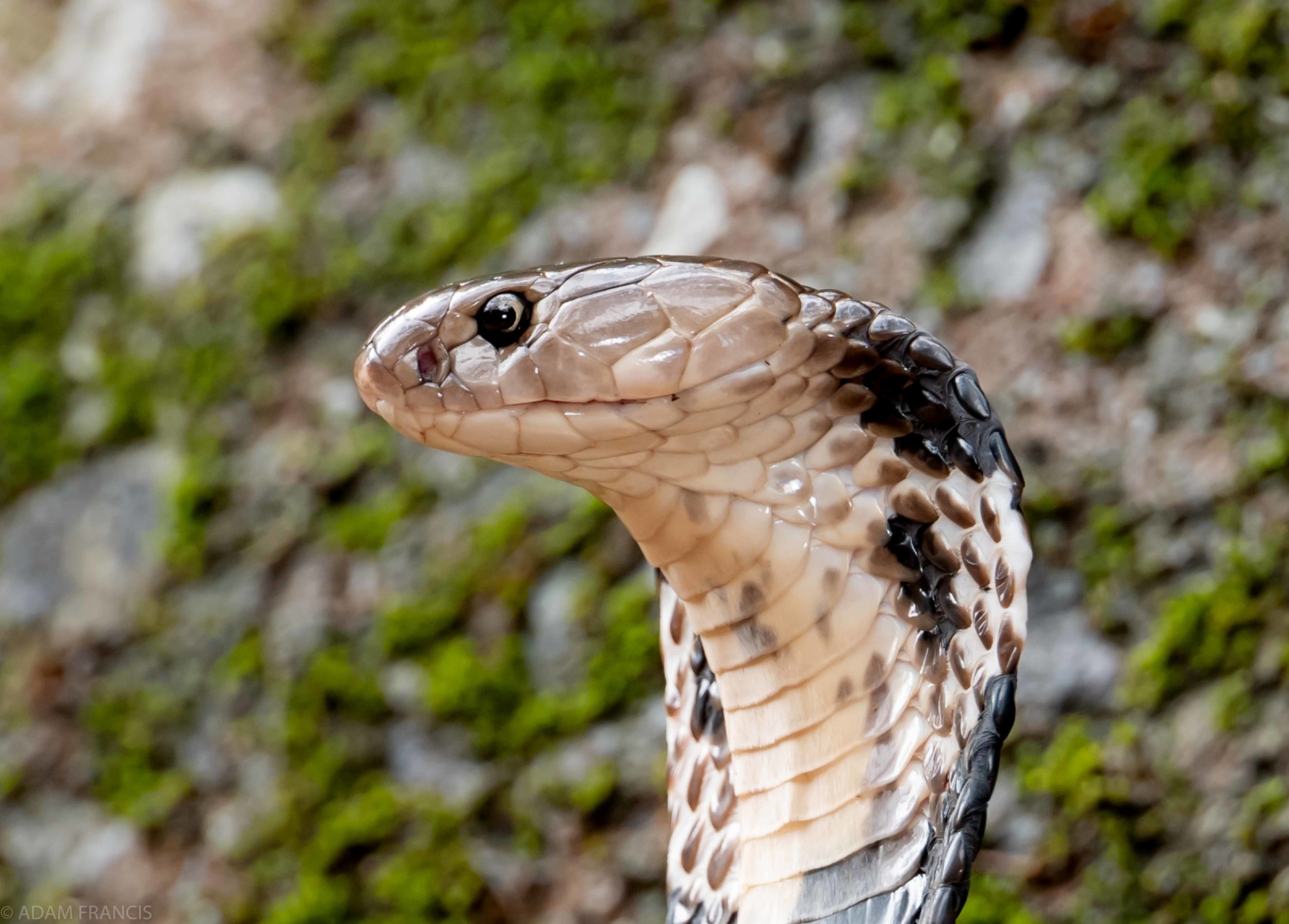
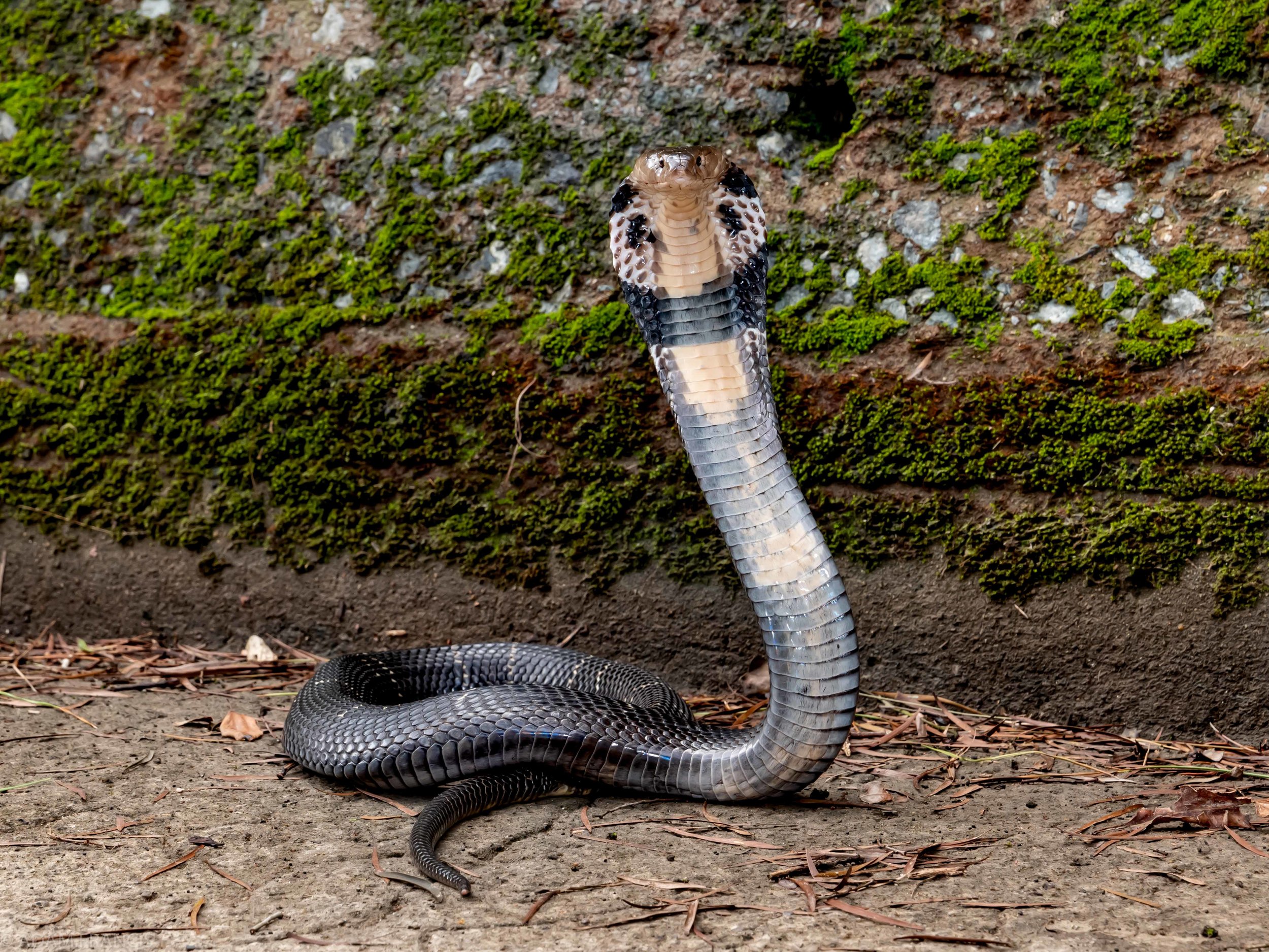
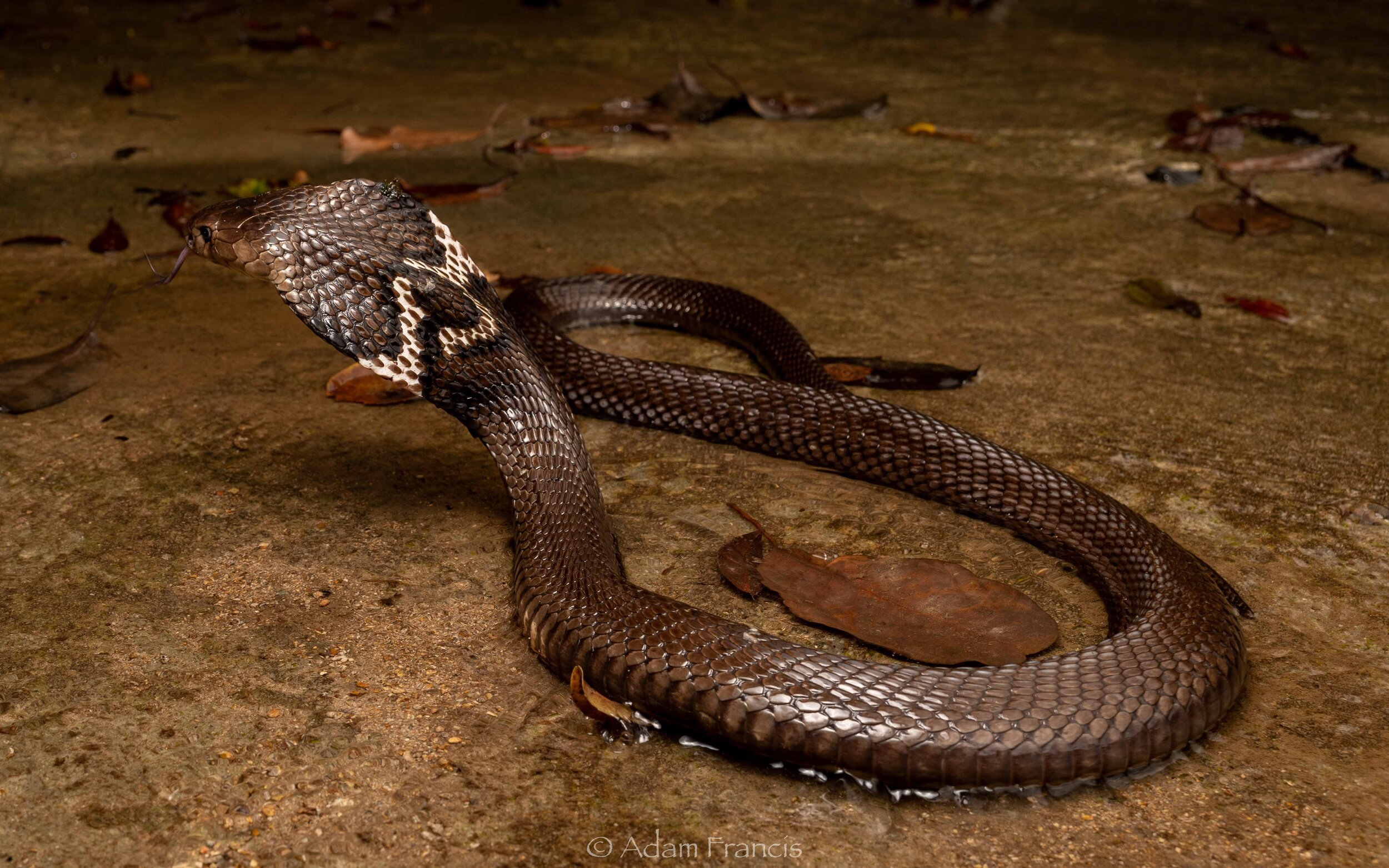
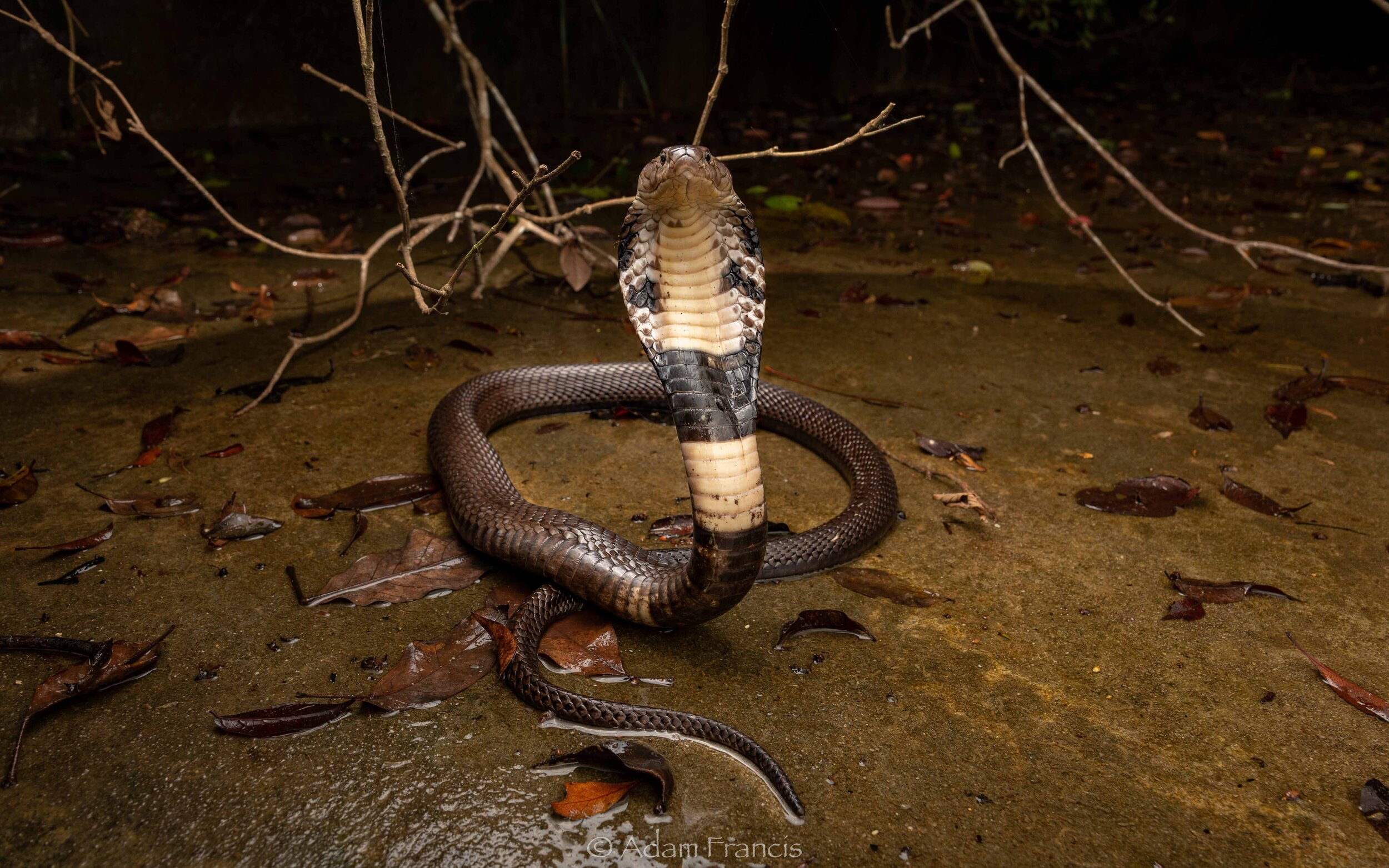
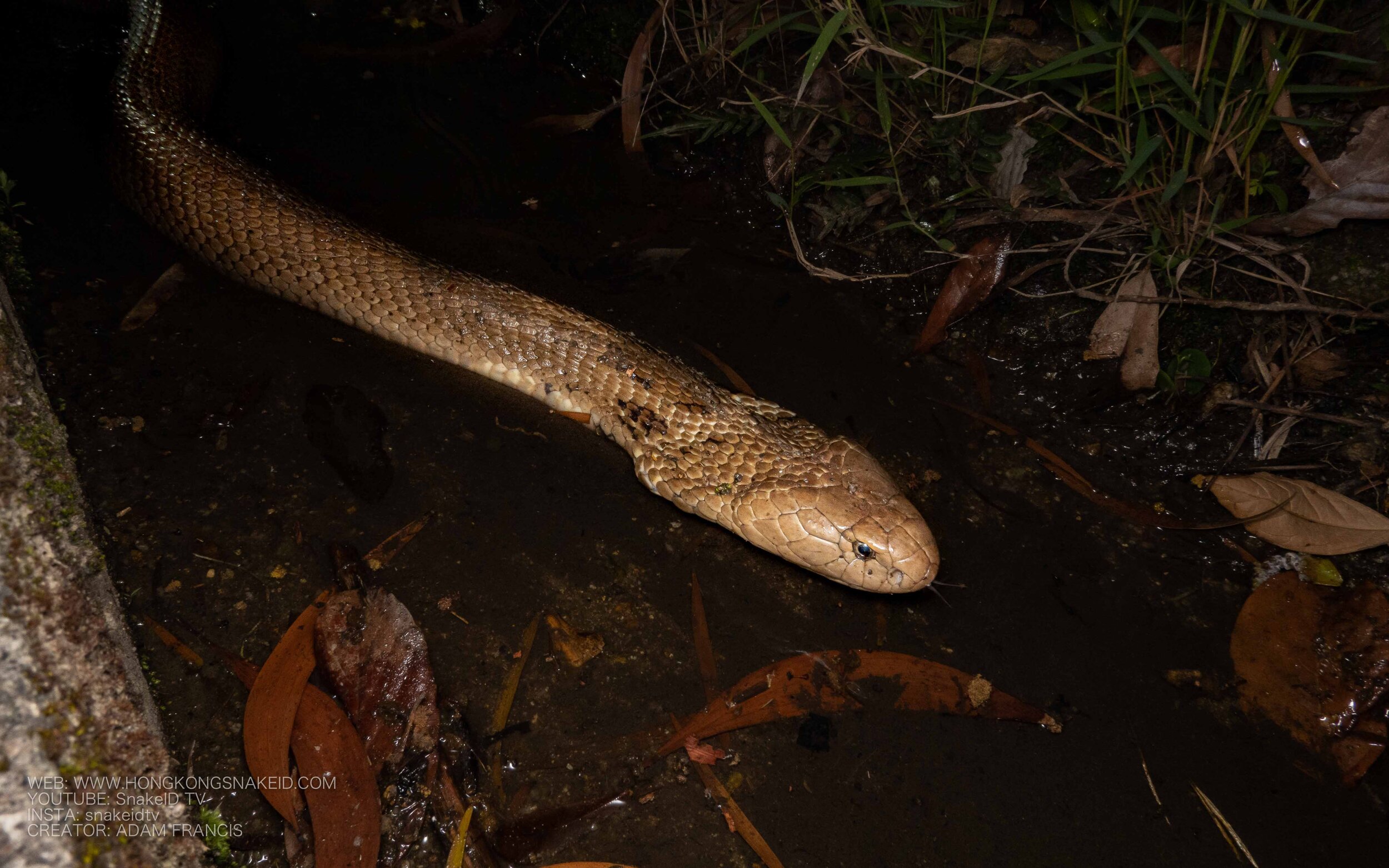
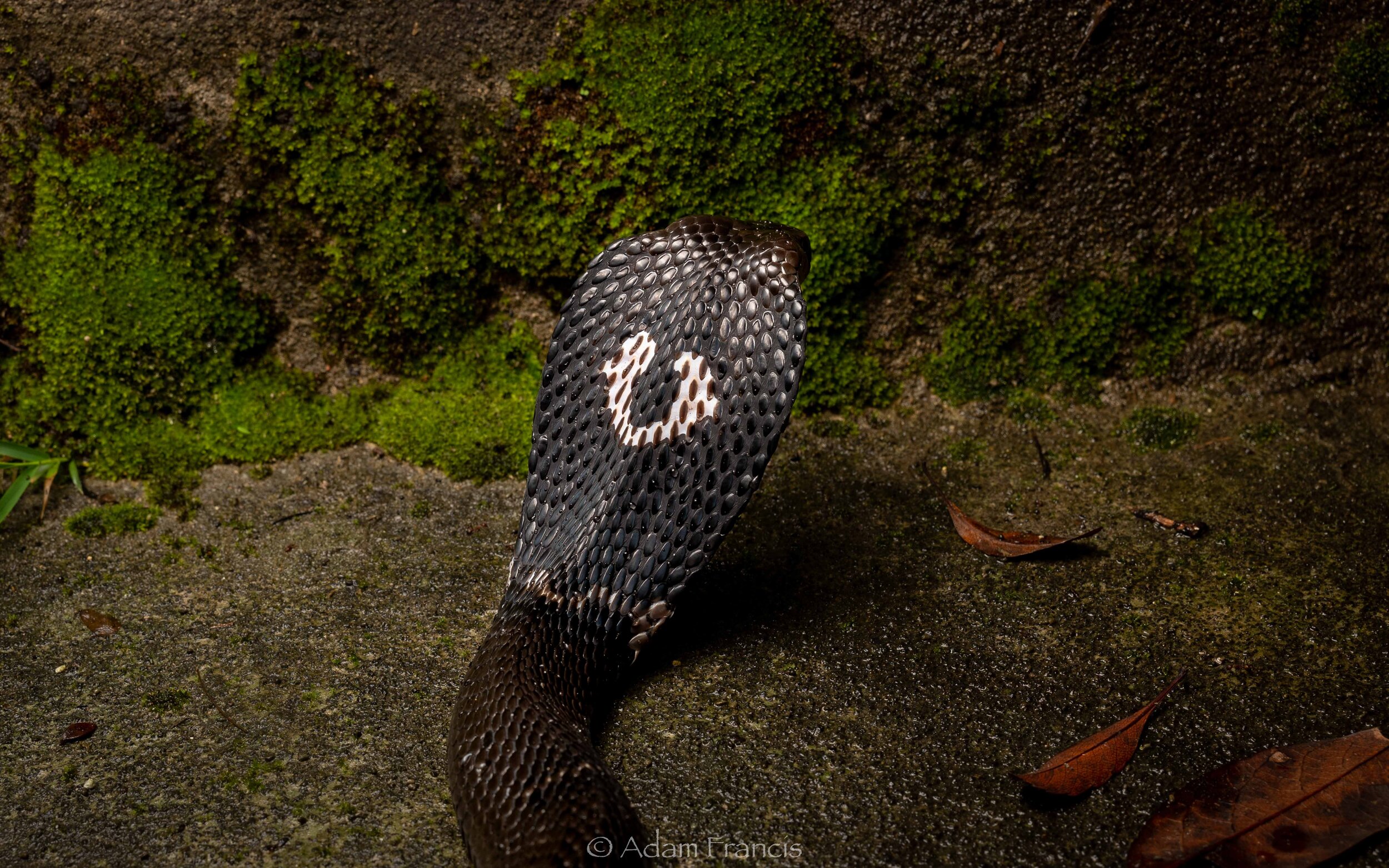
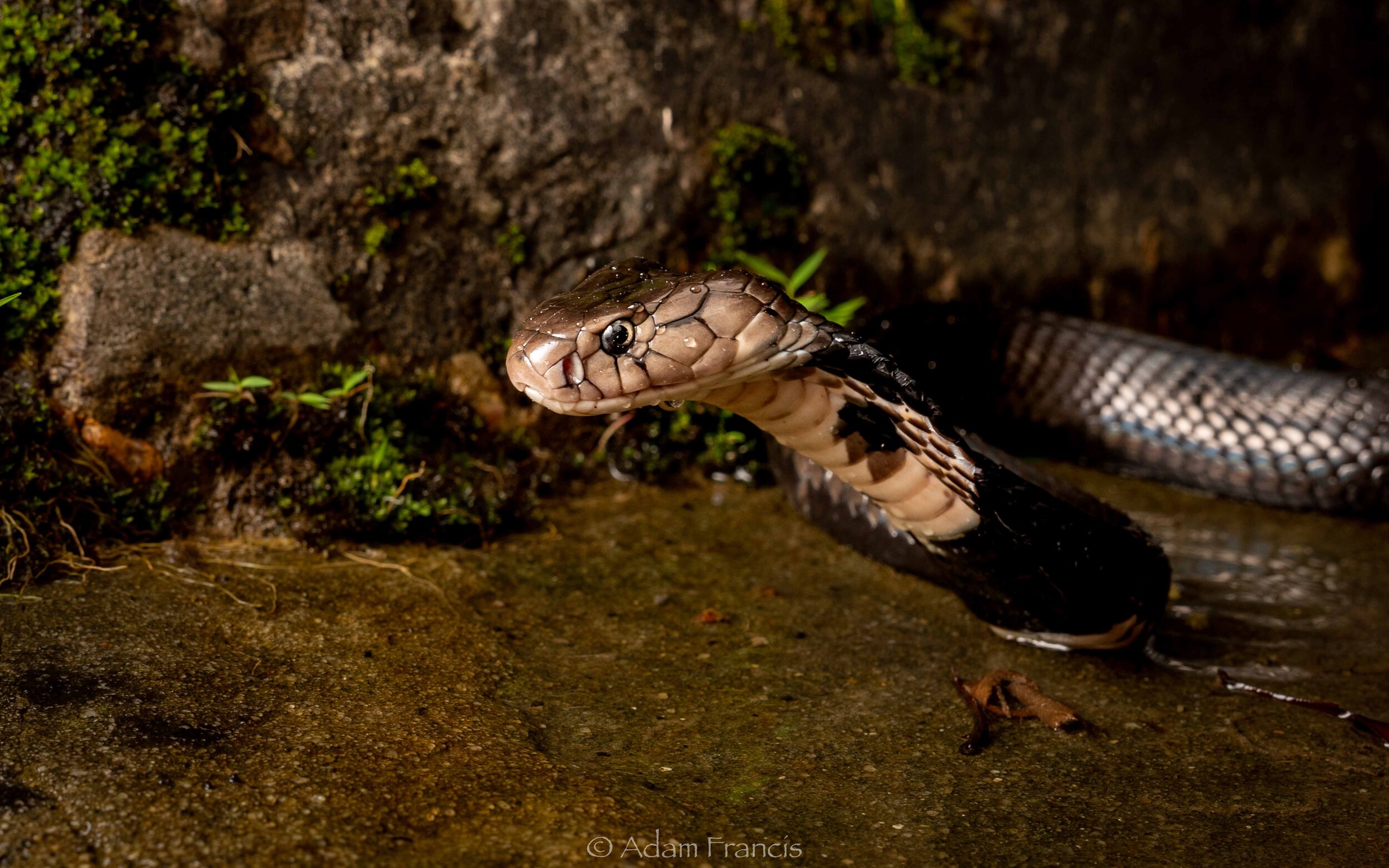
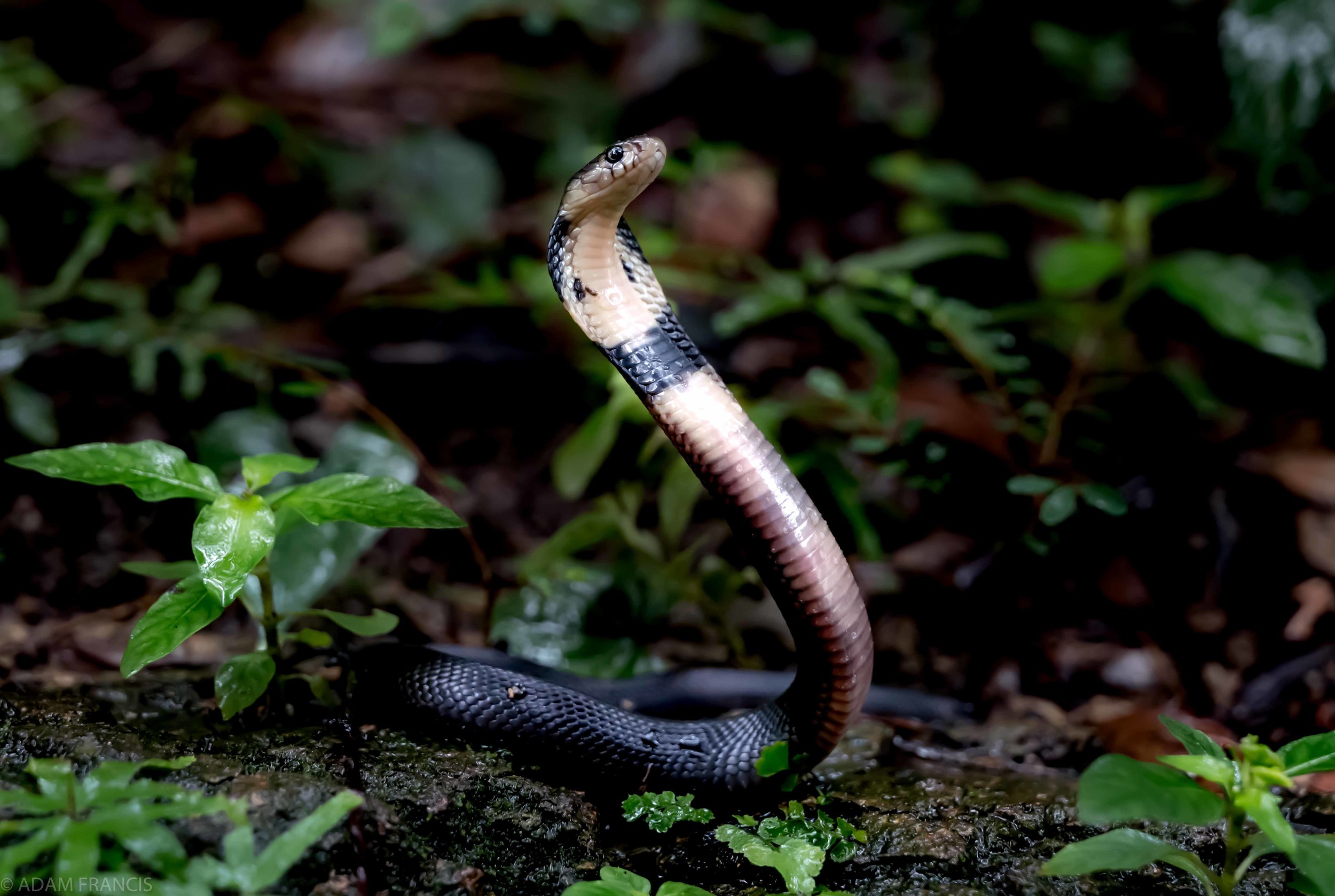
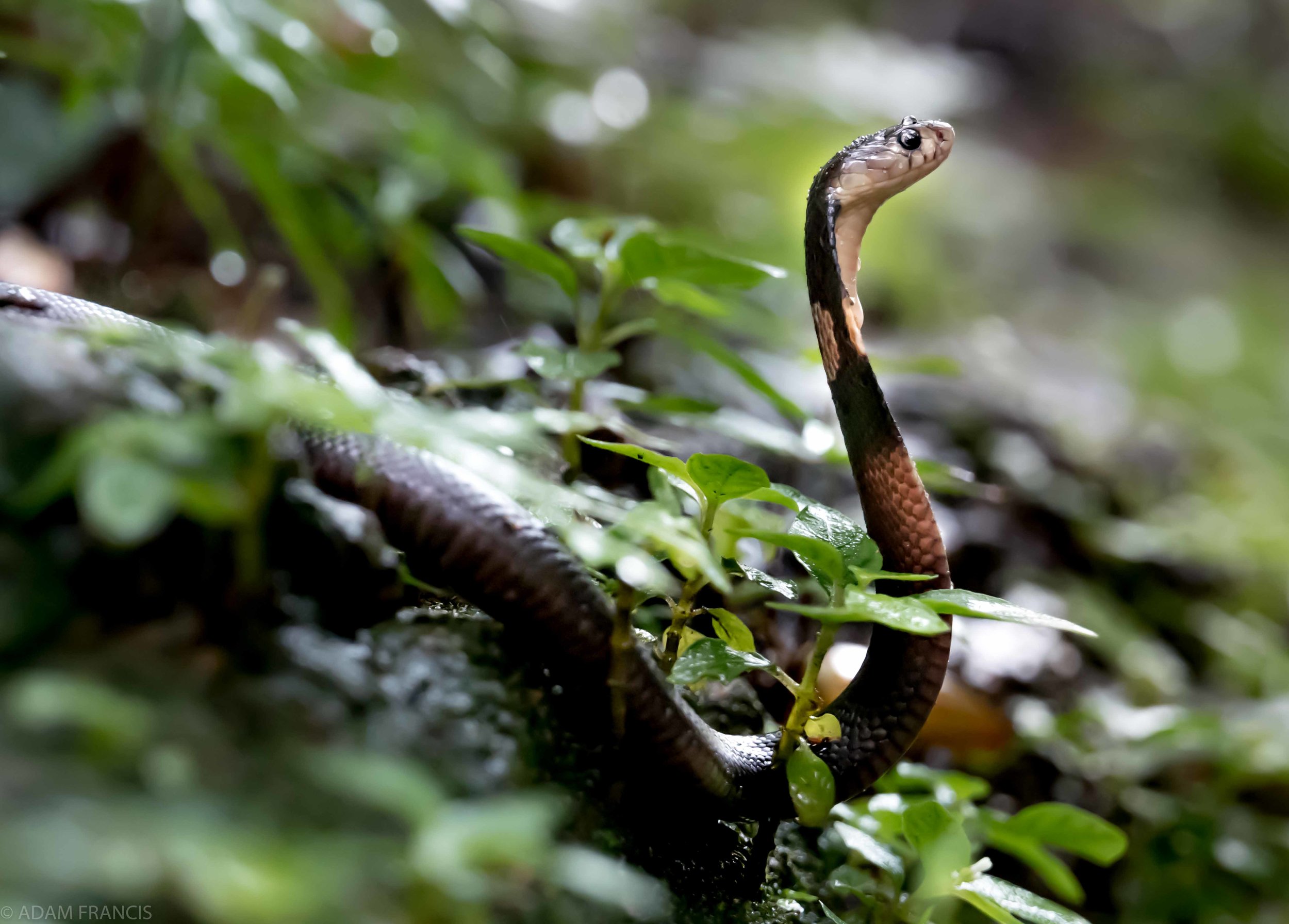
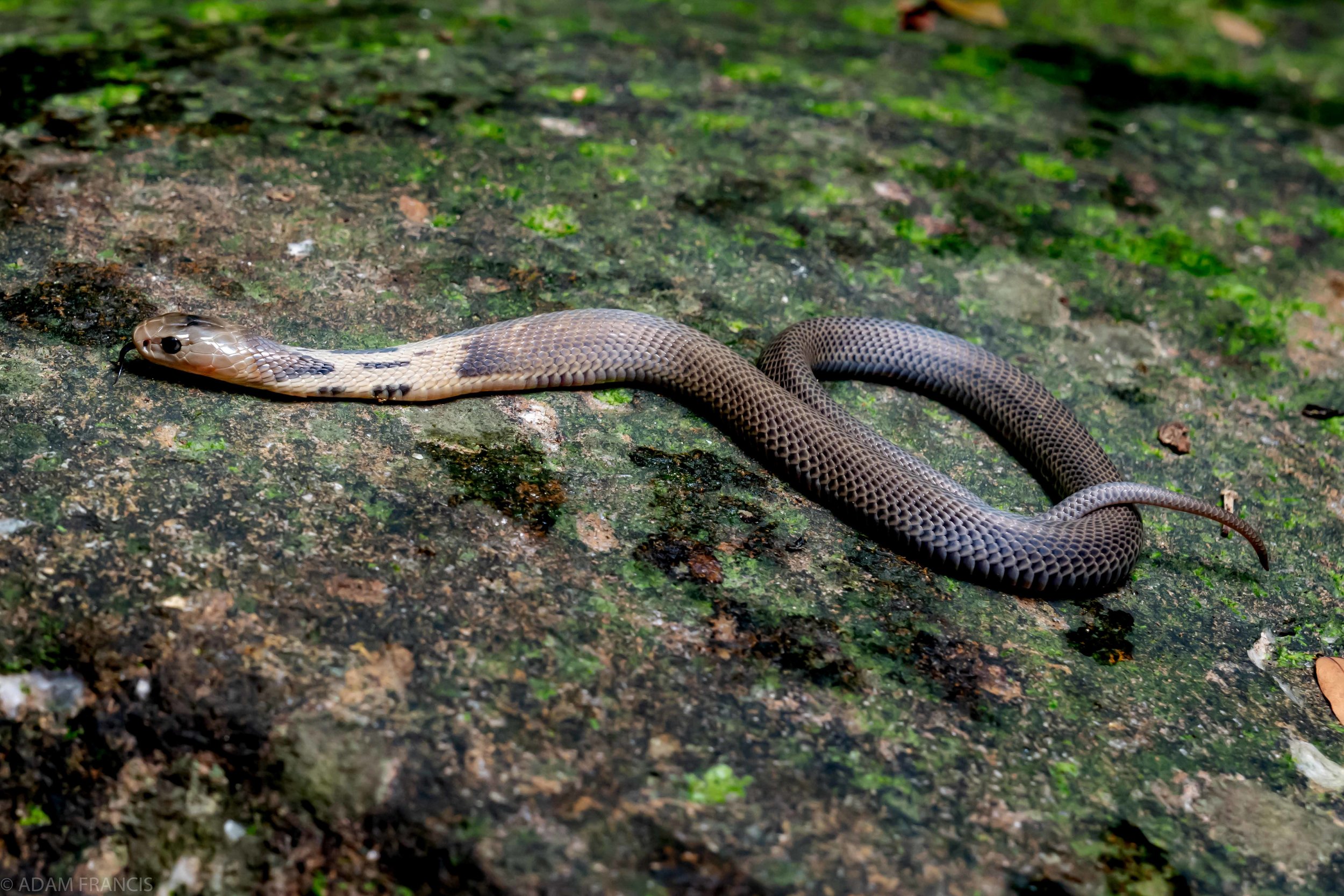
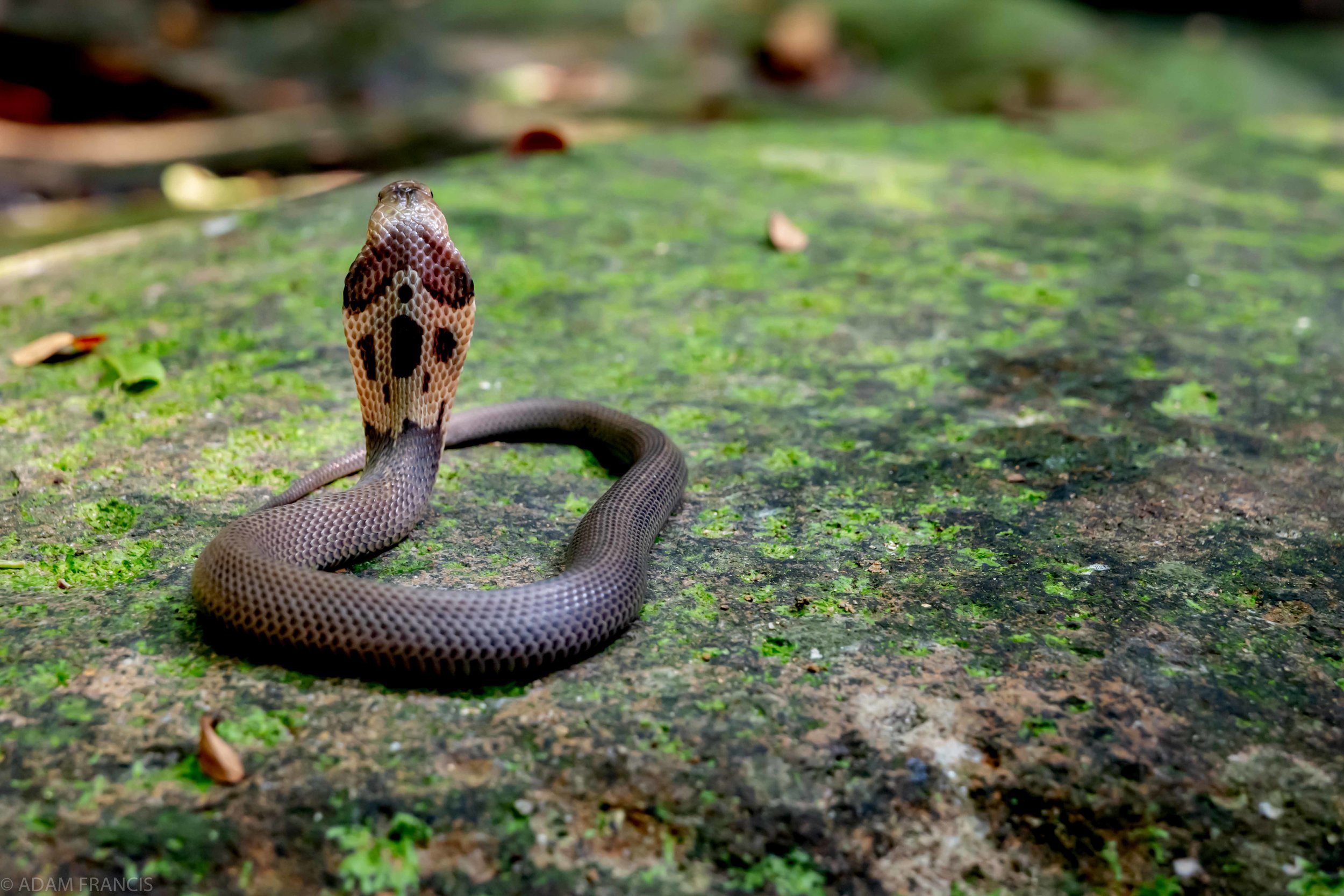
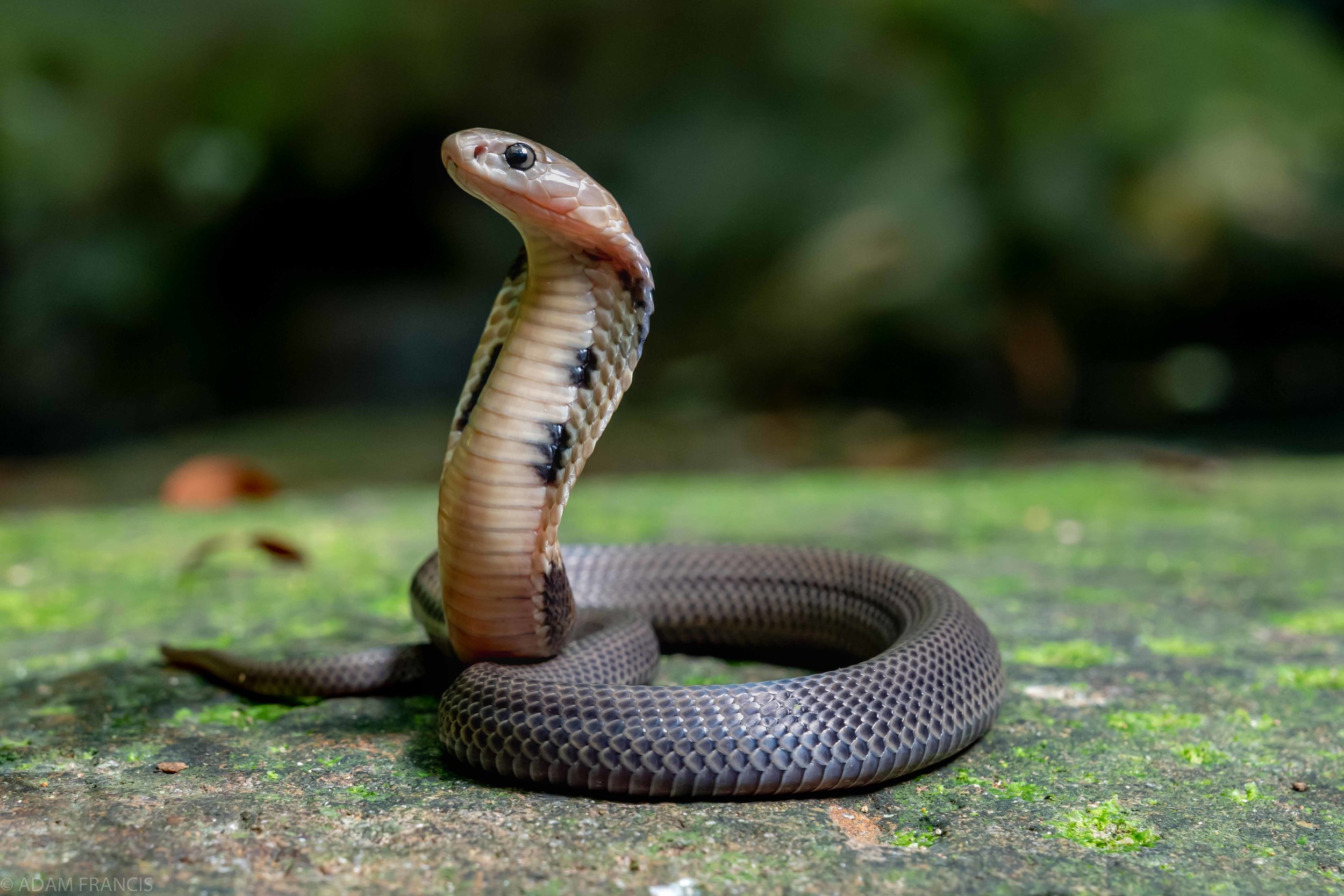
DESCRIPTION
Generally black/brown in color but can on rare occasions be grey or gold. Faint vertical banding from midsection through the tail, when not displaying its hood the Chinese Cobra can easily be mistaken for a rat snake at a quick glance. A key observation is the appearance of a white or light gray ring on the neck just behind the head, which, when the cobra rises up and displays its hood transforms into a monocle like pattern.
BEHAVIOR
Active during the night and day, the Chinese Cobra is a more common venomous snake in Hong Kong. As with many cobra species if the Chinese Cobra thinks it can get away it will most likely flee, but if it feels cornered or that you could easily give chase it will hood up rise off the ground and stare you down while hissing and intermittently striking at the air as a warning. Generally it will not attack if you are far enough away and standing your ground but all cobras are capable of rushing forward to intimidate and possibly strike which can cause people to panic and fall down and or receive a bite. Chinese Cobras as with all cobras have short fixed fangs at the front of their mouth that are highly efficient at delivering venom and any bite should be treated as an envenomation and immediately treated. Some cobras are also capable of spitting venom including the Chinese cobra, though they tend to exhibit this behavior less frequently and tend not to do so with great accuracy.
HABITAT
Chinese Cobras are found all over Hong Kong including Hong Kong Island. They eat rodents, lizards and occasionally other snakes and as such can be found from forested areas to areas around lakes and rivers as well as water culverts and jogging trails.
MISTAKEN IDENTITY
NO SNAKE SHOULD EVER BE HANDLED BY ANYONE BUT EXPERTS: Chinese Cobras as with King Cobras can be easily confused with Common Rat Snakes (and possibly some species of water snake) for the less experienced observer. The key differentiator is the monocled pattern on the back of the Chinese Cobras head which appears like a white or grey ring around the neck when not hooded. On longer closer observation the Chinese Cobra also displays faint vertical banding on its body, where rat snakes can be flat in color when smaller or slightly checkered towards the tail when mature. No Cobra should ever be approached, and rat snakes should be observed from a distance to avoid accidents due to misidentification. Visit the 'Practical Venomous Snake ID' section of the Snake ID page for tips on identifying some of the more common venomous species.
CHINESE COBRA vs RAT SNAKES
Key Differences: Common and Indo Chinese Rat Snakes are generally longer and thinner than Chinese Cobras with well defined thin necks and long thin tails, and Chinese cobras normally have light markings on the back of their thick necks, with relatively large heads and slightly stockier bodies with shorter tails.
HEAD: The Common and Indo Chinese Rat Snakes have longer thinner heads than Chinese Cobras with large pronounced eyes. IN addtion, the Common Rat Snake has distinct black lines on the scales surrounding the mouth. Both rat snakes have heads that taper into well defined necks. Chinese cobras have thicker heads with light color faces with no makrings on the scales. Also, due to their ‘hoods’ there is extra skin arounf their necks whcih make it indistinct from the head in width as you transition. Their eyes are also smaller realtively speaking, though both Chinese Cobras and the rat snakes have round pupils.
CHINESE COBRA - Small eyes, light color face, wide neck
INDO CHINESE RAT SNAKE - Narrow head, big eyes, thin neck
COMMON RAT SNAKE - Narrow head, big eyes, black stripes on jaw scales
MARKINGS: The Chinese Cobra is one of hte few snakes in Hong Kong that is relatively safe to use markings to identify. In specific, the Chinese Cobra will virtually always have an ornate light color marking on the back of its neck which is highly visible when they expand their ‘hood’ and often visible as a light color spot or ring around the neck when the hood is not extended. They may also have light color smooth or jagged bands on the body, though the Common Rat Snake also exhibits banding so this is not a safe way to distinguish between species.
CHINESE COBRA - Hood pattern variability
INDO CHINESE RAT SNAKE - Thin neck, no markings
COMMON RAT SNAKE - Think neck, no markings
TAIL: The Chinese Cobra has a short tail that ends in a tiny spike while the rat snakes both have long thin tails.
ACTIVE PERIODS: All three of these snakes are active during the day.





